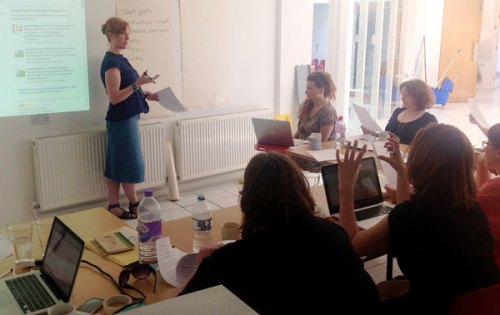This TES article on writing vs sub-editing came to me via the Twitters this week: a rather nice piece written in 1996 by Lynne Truss, called No jokes please, we edit. Anyone who’s crossed the writer-sub rubicon will find truth on both sides. For example:
The writers pained at being subbed:
Sub-editors change words, move jokes, cut sentences in the middle. And the irony is, they assume they are making improvements. I know this, because I was a sub-editor for 13 years and blithely rewrote some of the biggest brains in England. Now I am in the enemy camp, I feel quite sick at the recollection of former crimes.
But then how many more times do subs perform miracles on rambling, double-the-word-count, late-filed copy?
Writing journalism, the trouble is that nobody will tell you how it’s done; they simply rewrite you to fit the bill. When I handed in my first ever piece for publication, I expected a mark, lots of pointers in red ink, and a day’s grace to revise. Instead it was accepted, cut to fit, and printed.
Looking back, the classically trained sub can be a rigorous and rigid beast – they follow a set of rules taught on NTCJ or PTC courses, so it’s no wonder writers don’t understand all the edits. But there is usually a reason. As a former chief sub of mine once said: “I can justify every single one of my changes – I just don’t have the time.”
But then the newspaper form is a rigid space, with a stylebook handed down through the ages. Online is more freeform. It requires very little copy-fitting and a whole lot more awareness of the writer’s ‘voice’. (Something which Lynne Truss says she was always trying to get past the subs, like a weed ‘pushing through a crack in the pavement’.)
This is throwing up some new challenges for the copy editor. For example, as I was planning a workshop for print subs on digital skills this week, I found myself updating some of those classic rules of sub-editing to reflect the less strict and changing publishing environment.
That’s partly because we now live in a very different world from 1996 when at least reporters understood that their copy would be hacked to fit or styled for the publication over the voice of the writer. Non-journalists hold very different expectations and, shock horror, are arguing back. Not so much about grammar and spelling but voice, tone and content. Bylined subject matter experts want personal sign-off on anything they put their name to on the web.
And perhaps that is fair enough. Especially on a blog, where a byline is synonymous with personal writing and voice (even a waffly one).
Publishing may be getting easier but sub-editing isn’t the straightforward profession it once was. When I tell a print sub not to bother about smart quotes or widows, for example, you can see their shock.
Or when I depart from the set style of titles in full first time followed by the acronym, to sprinkle variations throughout the copy, I’m sub-editing for Google.
Even worse, I’ve realised that there is a place for jargon or slang in order to edit the copy for SEO for a target audience that uses those words as search terms.
Next week, I’ll be trying to explain these new world anomalies and rationales to a group of print subs who are making the transition into online editing. Expect to hear the sound of foundations shaking.
(I hope this makes sense, it’s late, I’m tired, and really I just wanted to get Lynne Truss’s article out there but like a midnight rambler without a sub, I carried on, and on, and…)




